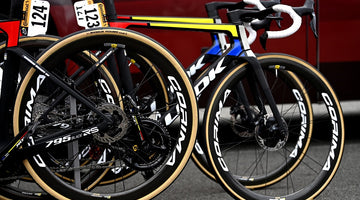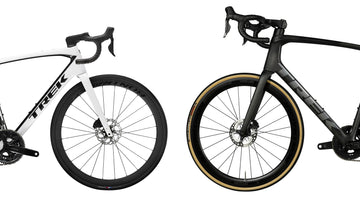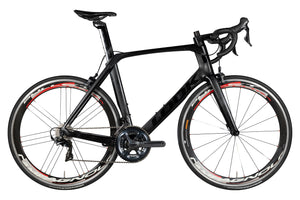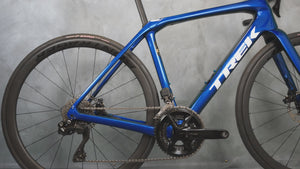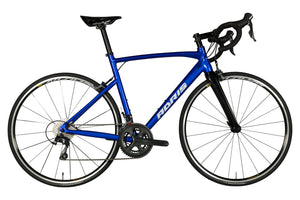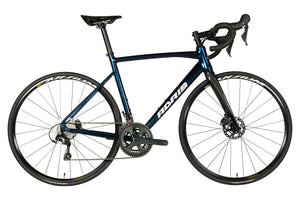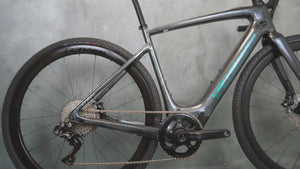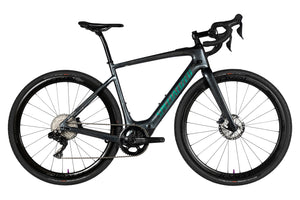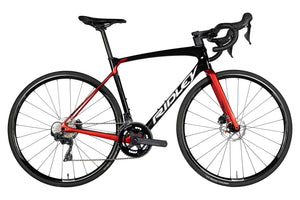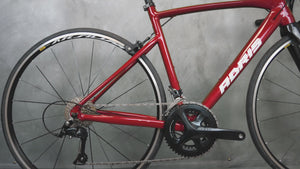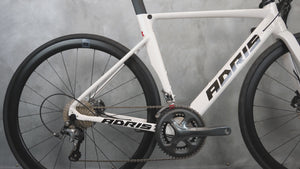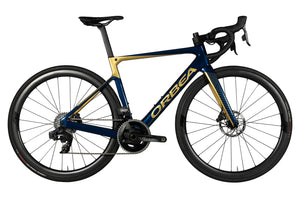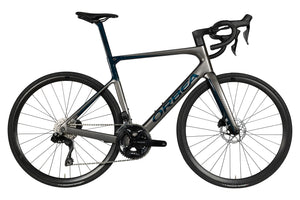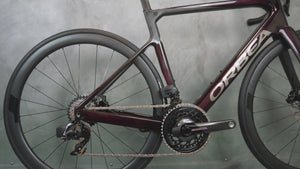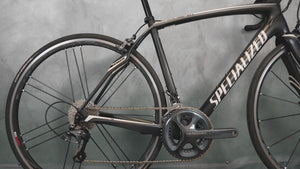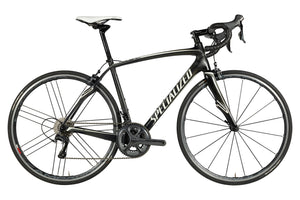What tire width for road and gravel bikes?
In this Article
Published on October 26, 2023
The tire width on gravel and road bikes... This is a topic that you often ask us about! Whether it's for more comfort, better performance, or transforming your road bike into a gravel bike on a budget, there are many good reasons to change your bike tires. Of course, there are material limits to consider: the width of your rims and the clearance of your wheel well. To help you see things more clearly, we'll take you on a journey through this article. What tire width for a road bike? 23mm, 25mm, 28mm? And for a gravel bike? Finally, as a bonus, we'll also look at the other criteria for choosing your bike tires!
Bike Tire Dimensions
Road Bike Tire Sizes
You may have noticed that road bike tires are wider than they were ten years ago. For years, we sought to use thinner and thinner tires. Professionals, for example, used 19mm section tires at one point. It was believed that the smaller the contact area with the ground, the greater the efficiency, and the more watts saved (even though we never used to talk about watts at the time).
Gradually, we realized that increasing tire width did not necessarily lead to a loss of efficiency. We moved on to 23mm tires, and today, we primarily use 25mm tires for sports use.
Beyond that, it's true that performance is slightly compromised, but you gain in comfort. So, some riders don't hesitate to switch to 28mm tires, especially for long rides.
Speaking of long rides, let's now talk about ultra-distance cycling. In ultra-cycling, comfort is prioritized over performance because the goal is not to break records but to arrive at the destination without being completely worn out... 😉 For this reason, ultra-cyclists use 30mm, or even 32mm section tires on their endurance bikes.
It's worth noting that wider sections allow you to lower tire pressure. This also improves grip.
But be careful, you can't put just any tire on any bike. We'll explain the constraints a bit further down!
Gravel Bike Tire Width
Obviously, a gravel bike will have wider tires: from 30 to 47mm. This much wider range actually reflects the various ways of practicing gravel biking. (In road cycling, the practice is the same for everyone, so the differences are much less significant.)
Nevertheless, there's an average width of 38 to 42mm for gravel bike tires.
Narrower sections are suitable for those who occasionally ride on trails or for those who are very skilled on challenging paths and want to experience something close to cyclo-cross.
Beyond 42mm, it's very comfortable, perfect for long trips or bikepacking, or on the other hand, for those looking for an experience similar to mountain biking.
Changing Your Bike Tires
Rim and Wheel Well Dimensions: Two Constraints to Consider
Correspondence Table Between Tire Size and Rim
Before fitting a tire on a wheel, you need to make sure they are compatible. Since a wheel costs much more than a tire, it's better to start with what your wheelset can accommodate.
To keep it simple, we offer a small table below that shows the correspondence between rim width and tire size.

Wheel Well Clearance
And that's not all! Even if your tire fits on your wheel, it also needs to clear the fork. The widespread use of disc brakes has allowed more space for tires, but there's still a limit. Often, you can find information on the brand's website, but you can also inquire with your favorite mechanic.
And for The Cyclist House bikes, the team will be happy to provide you with information! 😉
Changing Your Road Bike Tires: What's the Benefit?
We started to mention it: changing your road bike tires can help you improve efficiency (if you switch from 28mm to 25mm tires, for example) or comfort (if you make the opposite choice).
It can also be a way to adjust your bike's behavior. If you find it too rigid or too flexible, changing your tires can partly address what bothers you because you can also adjust the pressure.
Can You Mount Gravel Tires on a Road Bike?
Changing your tires can also be a first step in transforming your road bike into a gravel bike. But we won't lie to you, it won't work with all bikes...
If you have a highly aerodynamic model with a carbon frame optimized for performance, it will be difficult to turn it into a gravel bike!
On this type of bike, it won't be possible to use tires wider than 28mm. Moreover, you risk damaging the frame. While carbon is more robust than you might think, there's a world of difference between the roughness of the road and rocky paths. A 7kg frame isn't designed to overcome obstacles, that's how it is.
However, starting with an endurance-style model, anything is possible. Very often, these bikes allow you to install tires up to 35mm. That leaves room for gravel-style slim tires.
Choosing Your Road and Gravel Bike Tires
How to Choose Your Road Bike Tires?
At first glance, they all look the same... But in reality, it's not that simple. To choose your road bike tires, you'll need to consider several criteria other than compatibility with your wheel.
Weight
Some competition models are very light, under 160 grams. If you don't compete, you can still opt for Tubeless tires, which have the dual advantage of being lightweight (no inner tube) and puncture-resistant (thanks to the internal sealant). However, make sure your wheel is "Tubeless Ready" and equipped with an appropriate valve.
👉 Tubular, Tubeless, inner tubes? Make the right choice with our article on this topic!
Longevity
For endurance riding, it's better to prioritize models that offer great longevity. Their harder rubber is less performant than competition tires, but they wear out more slowly. In addition, they are reinforced against punctures. However, they are obviously heavier.
Summer Tires or All-Season Tires?
Just like with cars, there are all-season tires suitable for winter conditions.
Comfort
Comfort isn't just determined by tire width and pressure. The tire carcass also has an impact.
This characteristic is measured using the TPI index. This number indicates the number of threads per unit area. The higher it is, the more threads the tire's skeleton has.
What does this mean? High TPI = a supple tire that absorbs road irregularities.
Be aware that the material of the threads has an impact: cotton is always more supple than nylon.
What Tires for Gravel Biking?
As we mentioned, the variety of terrains and practices means that gravel bike tires can be very different from one cyclist to another. It's important to choose them well so that they provide you with the best balance of performance, comfort, and grip possible.
Generally, gravel bike tires have a central tread (for efficiency on paved sections) and more or less pronounced side knobs (for grip in tricky turns).
The first criterion for selection is tire width or section:
- Under 40mm: Slim tires perfect for smooth routes or CX enthusiasts;
- Between 40 and 45mm: All-terrain tires, but less efficient on the road;
- Over 45mm: Tires suitable for rough terrain, but heavy and less efficient on smooth sections.
The second criterion is the tread pattern.
"Semi-slick" tires have low knobs and are designed for use on roads or groomed paths.
"Knobby" tires have pronounced tread patterns to maintain grip. Some models almost resemble what you find on MTBs.
Replacing the tires on your road bike or gravel bike can change its behavior or allow you to explore a different aspect of cycling. The key is to check compatibility with your equipment in advance.
Having issues with your rims? Don't worry! You can find reconditioned wheels for gravel and road on our website.
Warranty, inspection by our mechanics, returns, and refunds... The conditions are the same as for our reconditioned bikes!











